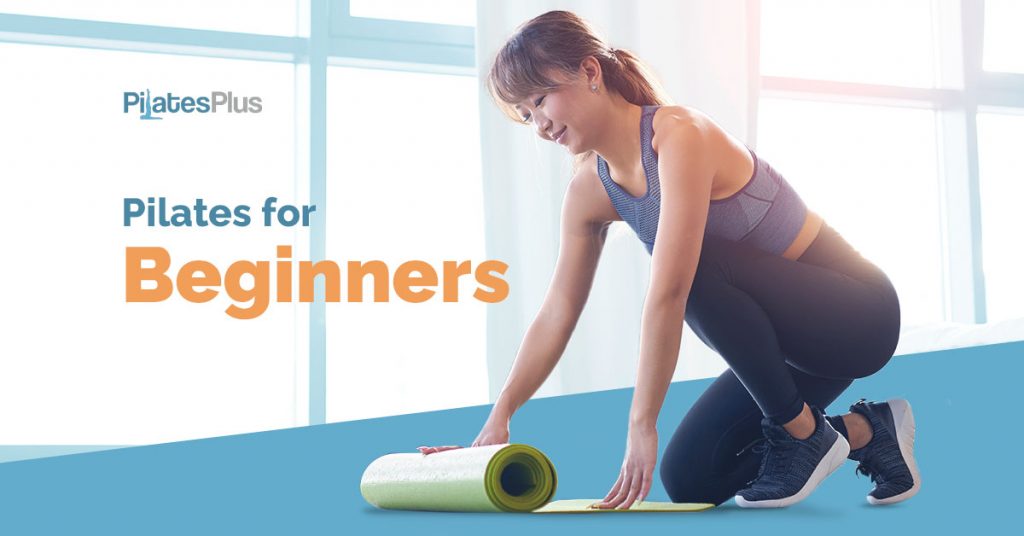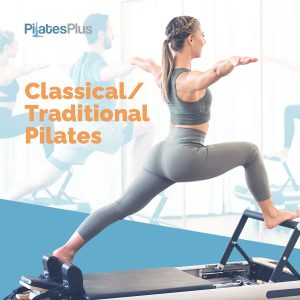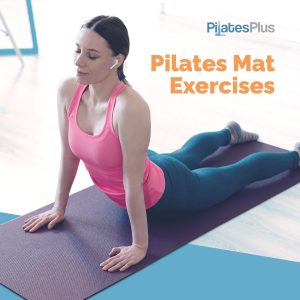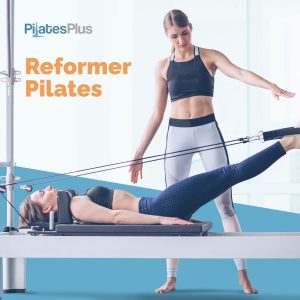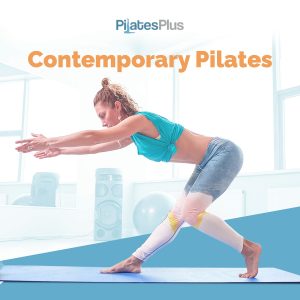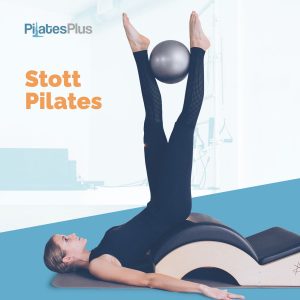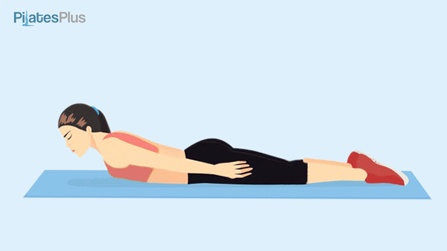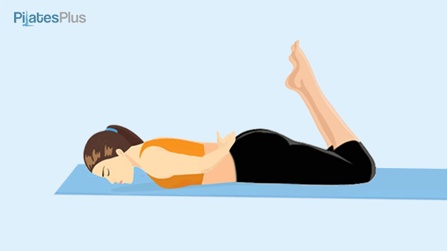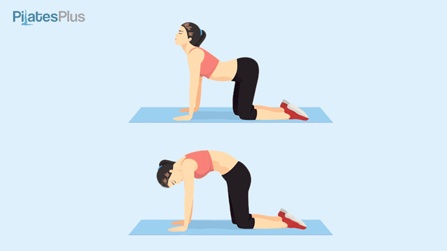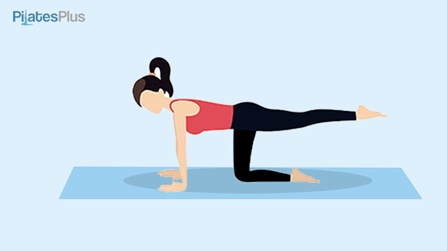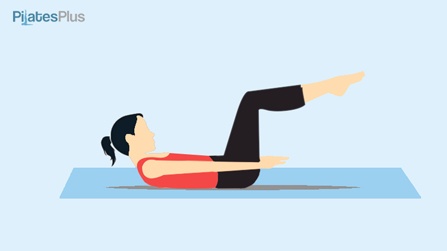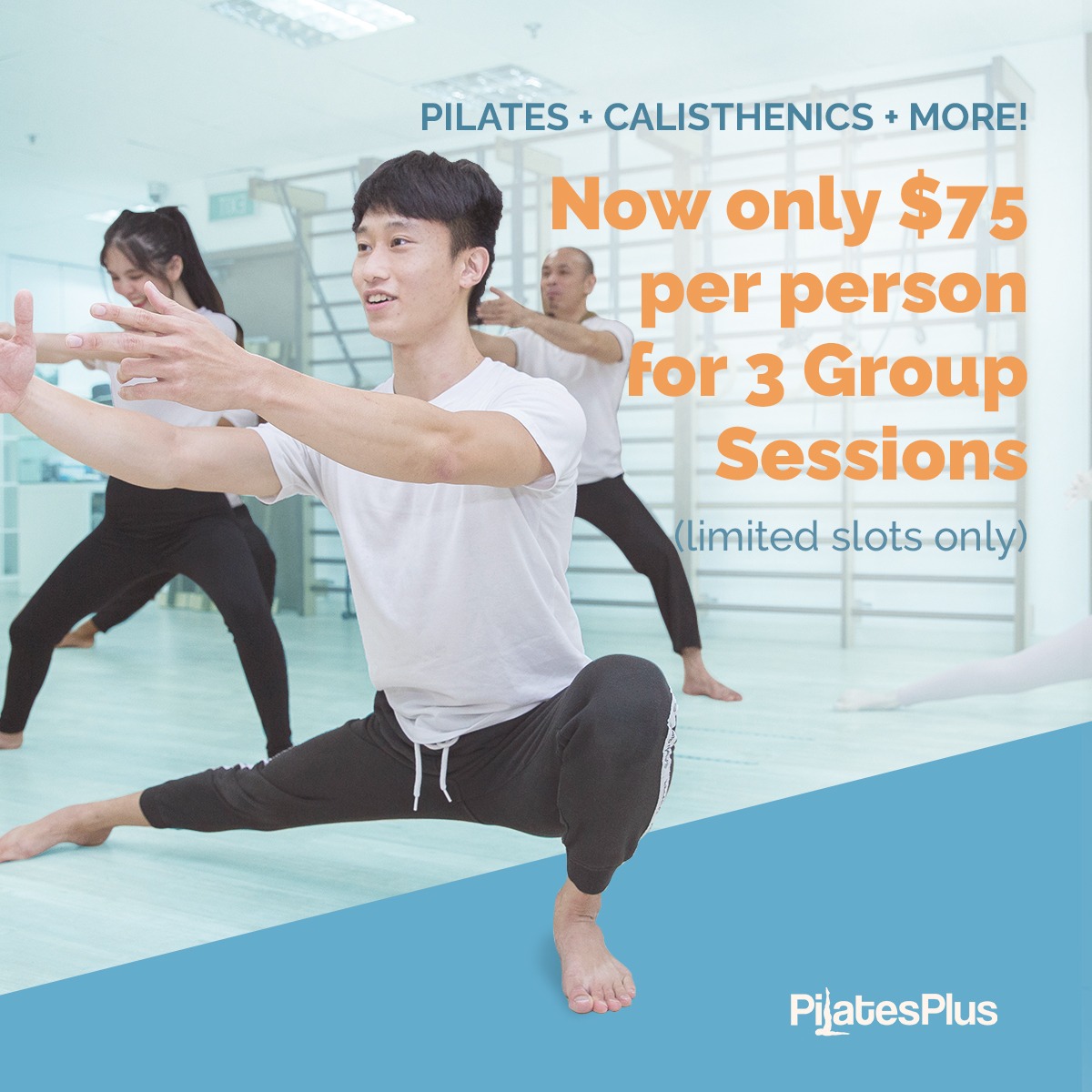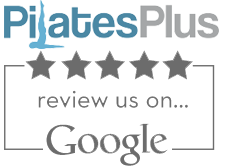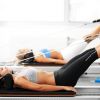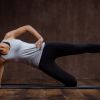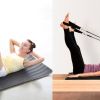PilatesPlus Blog
Home »
Pilates for Beginners
Different Types of Pilates | Benefits of Pilates | Myths About Pilates | Pilates Classes in Singapore
Pilates is a good start if you’re a newbie at fitness, specifically since Pilates exercises can be modified conveniently to suit a person’s physical condition and capabilities. Beginners Pilates can be for strength training, which is great for Pilates first-timers and people rehabilitating from injuries. But Pilates workouts also supplements cross-training in athletes, for added conditioning and stamina-building.
At its core, Pilates is a versatile fitness program that helps you MOVE and live life fuller. At Pilates Plus Singapore you’ll get to:
M – manage your body + mobilise your energy through strength training
O – overcome your limitations and optimise your productivity with improved flexibility
V – validate your needs and visualize your joy with the right breathing techniques
E – explore a new experience and enrich life with a new passion and a community behind it
Ready to take that first step to a healthy lifestyle but not sure where to start? Pilates for beginners is a good option, especially if hitting the gym or taking up a sport isn’t your thing. But if you want to be more adventurous and really get into the Pilates experience, then you might want to try Pilates Reformer.
Know why asiaone cites Pilates Plus among the most affordable Pilates studios in Singapore
Different Types of Pilates
Founded by Joseph Pilates in the late 1800s, Pilates offers a variety of stimulating training, comprising different variations of exercise, some of which are performed with or without equipment. Pilates has undergone transitions over the years but maintains its core principles of breathing, control, centering, and flow. Here are common types of Pilates to help you find one that works best for you:
Classical/Traditional Pilates
Joseph Pilates first coined the term contrology to describe his sequence of 34 exercises—each flowing to the next in purposeful succession. Each exercise is executed in the exact sequence, in the designated number of repetitions (usually no more than six reps), before moving on to the next exercise. This type of Pilates may also involve the use of equipment.
Pilates Mat Exercises
Mat exercises are a good introduction to the world of Pilates. These are low-impact exercises that may involve the use of weights, balls, therabands, or rings. However, the movements are still based on the traditional Pilates system. First-timers and people suffering from back pain will benefit most from mat exercises because it focuses on strengthening the core.
Reformer Pilates
This type of Pilates utilises a piece of equipment called the Reformer, which looks like a bed frame with a tension apparatus attached to it. The movements here are similar to mat Pilates but more challenging, given the added resistance from the various springs, straps, and ropes. As such, you burn more calories and build up more muscle strength.
Contemporary Pilates
As the name implies, this is a modern take on the classical system of Pilates. The exercises here are founded on contemporary research, including modern approaches to motor learning, rehabilitation, and biomechanics training. The movements are taught differently, depending on the instructor.
Stott Pilates
Stott Pilates was created in 1998 by Moira Stott-Merrithew, a former dancer. The exercises have sequences and movements that differ from the classical version. In traditional Pilates, the spine is pressed to the floor but in Stott’s version, the lower back is kept off the floor, maintaining the natural curvature.
Learn more about the Hystory of Pilates
Benefits of Pilates
The Pilates method is an effective full-body workout that strengthens and stretches the entire body to create a well-balanced physique. It also trains you in conscious breathing, which aids in stimulating blood circulation and minimising muscle cramping.
The idea of Mr. Pilates’ 34-sequence method is such that it progressively warms up the body, challenges it with exertion, and cools it down gradually. Here are just some of the benefits of Pilates:
- Enhanced Strength
- Improved Posture
- Better Balance
- More Flexibility
- Increased Muscle Tone
- Healthier Joints/Ligaments
- Aids in Weight Loss
- Added Stamina/Energy
- Optimised Breathing
- Body-Mind Harmony
- Improved Mobility
- Increased Range of Motion
- Stress Management
Know How to Get the Best Results from Pilates Classes
Myths About Pilates
Given the global health scare that we’re all going through, now’s the time to take that first step toward a work-life balance that puts body-mind fitness as a priority. So, if you aren’t sure where to start, and if hitting the gym or taking up a sport just doesn’t cut it for you, then why not give Pilates a try?
Pilates is an approach to conditioning developed over a hundred years ago by its founder Joseph H. Pilates, who first called it “contrology.” If you’re new to Pilates, chances are you’ve heard some misconceptions about it.
Let Pilates Plus Singapore bust those myths and give you the facts straight out. Here are some of the myths we are debunking:
Pilates is just another form of yoga
Pilates and yoga both work on building body strength, alignment and flexibility but they are not one and the same thing. Though some poses look similar to yoga, Pilates uses different movement and breathing techniques with different results. More importantly, yoga is limited to mat exercises while Pilates makes use of both mat and specialised equipment.
Pilates is only for fit and young people
People of all ages and levels of stamina can benefit from Pilates—even if you think you’re not athletic! People who aren’t interested in the usual gym exercises may find Pilates more engaging since classes are offered in varying degrees of physical capacity. It’s designed in such a way that you can go from a newbie to an advanced practitioner with regular practice.
Pilates is for women only
Most men do gym workouts and weights to build up their core and develop their muscles, which can also be achieved with Pilates exercises. Female and male athletes alike use Pilates as conditioning for all kinds of sporting activities, even extreme sports. Regardless of gender, Beginners Pilates is used by many to complement physical therapy or injury rehabilitation. [Read why Pilates is a Good Workout for Men]
Pilates is just another weight-loss program
Yes, the exercises help keep the weight off and stabilise your metabolism but Pilates does more than that. Aside from being a physical workout, Pilates is about achieving mind-and-body harmony, freedom of movement, and ultimately, a zest for life. Complemented with dietary and mental health guidance, Pilates can be a path to health, happiness, and new horizons.
Pilates classes are too expensive
Imagine signing up for a standard gym membership and finding out that you’re left to your own devices, figuring out for yourself what exercises to do and how to use the equipment. At Pilates Plus Singapore, we have instructors on hand to guide, motivate, and advise you—even for group classes. We’ve made our Introductory Pilates class accessible to all [at $75 (one time purchase only), 3 classes, non-reformer group classes] so everyone can join!
Find out more about The Traditional Joseph Pilates Program
Where to Get Pilates Classes in Singapore
Although group sessions are less expensive, we recommend taking private sessions if you’re a beginner. It’s because the essential techniques should be adjusted to suit your own needs and physical capabilities, and you have to get accustomed to the equipment.
For Pilates Plus, it’s not just a matter of taking classes, it’s about embarking on a journey to health and joyfulness, with our certified trainers as your guide. For us, Pilates is not just a profession but a passion. We’ve made our rates cost-efficient and relatively affordable because we want everyone to have the same life-changing experience that we do with Pilates.
Ready to begin your Pilates journey? Take that first step with Pilates Plus Singapore today!
Choose the Promo, Rates and Schedule that Work Best for YOU!
Pilates Exercise for Back Pain and Lower Back Problems
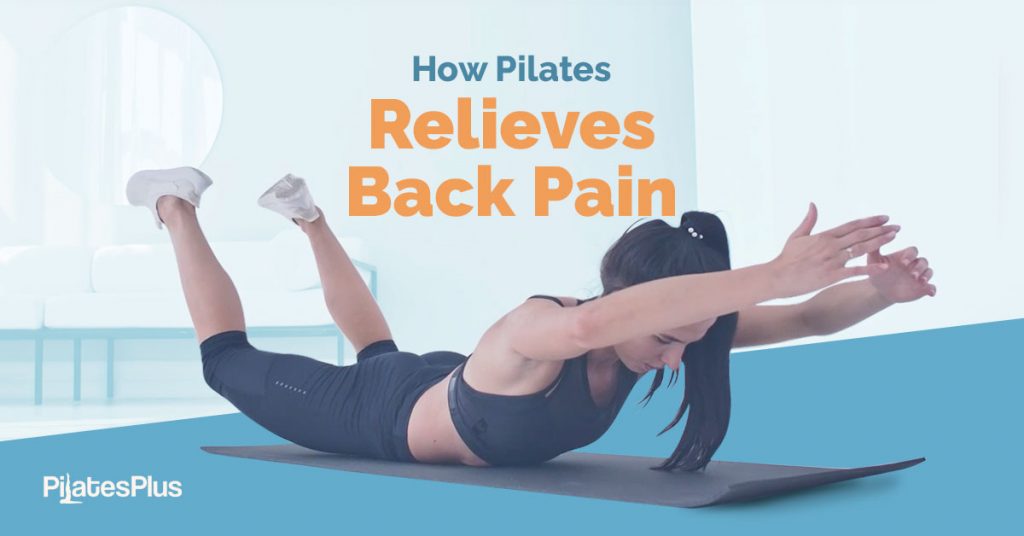
How Pilates Relieves Back Pain
Sitting for hours on end hunched over our desks or devices could lead to back pain. Research says that a sedentary lifestyle increases our risk for some chronic diseases or even premature death. Fortunately, Pilates exercises such as leg kicks and back extensions can bring positive results.
Wells et al. reported that “Pilates exercise offers greater improvements in pain and functional ability compared to usual care and physical activity in the short term.” Bird and Fell also wrote that Pilates exercise has long-term effects on improving balance and strength in older people.
In most cases, it’s the lower back, that part of the spine that curves inward at the base of the back, that takes the most impact when we’re seated. Pain is either concentrated in one area or radiates throughout the back along the spine’s network of nerves, muscles, and ligaments.
Another common reason for back pain is muscle strain, which affects the lumbar region or the lower part of the back. That’s why when you overstretch or twist, you sometimes feel an ache or a stiffening of the muscles, from the back down to the buttocks.
If you’ve been feeling more and more of the pain and strain, it’s a good time to take steps to correct it as it could be symptoms of a more serious problem with the bones and joints. Here are some Pilates workouts that are effective in preventing back pain or reducing lower back pain:
Back Extensions
Back extensions are low-impact exercises that strengthen the lower back muscles. These improve the torso’s range of movement while correcting our posture, thus preventing back injury.
How to do Pilates Back Extensions:
- Lie face down with your hips flat on the mat and your legs straight behind you
- Contract your abs and back muscles as you lift your torso and legs
- Hold the pose for 30 seconds, keeping your head in neutral position
- Lower your body down to the mat, then return to the starting position Lower your body down to the mat, then return to the starting position
- Repeat the movements and complete the designated number of sets
Double Leg Kicks
Double Leg Kicks loosen up the lower back muscles and help the body develop more flexibility. This Pilates exercise gives the hamstrings a good workout while improving mobility around the hips.
How to do Pilates Double Leg Kicks:
- Lie down on your stomach with your legs together and straight behind you
- Clasp your hands behind your back, arms relaxed and face resting on one side
- Bend your legs as you exhale, pushing your feet three times toward the buttocks
- Lift your torso and bring the head to the center as you straighten the arms and legs
- Exhale and lower your body. Repeat the movement with the face turned to the other side
Meet Your PILATES PLUS Trainers
Cat and Cow Stretch
The Cat and Cow Stretch, a pose that mimics a stretching cat and a grazing cow, is for toning the back muscles (latissimus dorsi) without the help of any equipment. It’s great for easing tension and strain.
How to do the Pilates Cat and Cow Stretch:
- Get down on your hands and knees, keeping your spine neutral (like a cow grazing)
- Lift your sit bones upward, press the chest forward, and let the stomach drop
- Lift your head, relax your shoulders, and look straight ahead
- Arch your spine outward and draw the pubic bone forward as you exhale
- Let your head and tailbone drop a few inches to the ground (like a cat stretching)
Hip Extensions
Hip Extensions are also an ideal workout for both the lower back and pelvic muscles. They strengthen the glutes and hamstrings and maintain pelvic alignment, which increase support to the lower back.
How to do Pilates Hip Extensions:
- Lay your forearms and palms flat on the mat with the and head in neutral position
- Place your knees beneath your hips at a 90-degree angle
- Straighten your spine from head to tailbone, then lift one leg backward
- Lift the left leg toward the ceiling as you exhale, keeping the pelvis in neutral
- Inhale as you lower the leg, then lift the same leg up as you inhale
Knee Folds
Knee Folds are one of the most basic Pilates exercises. These are often done as a warmup to mat or Pilates equipment workouts. They are also effective in releasing stress and tension on the back.
How to do Pilates Knee Folds::
- Lay down on the mat with the pelvis and spine in neutral position
- Keeping the spine stable, move one leg into a 90-degree angle at the knee
- Draw the right leg in as you exhale, and lower it as you inhale
- Lift the leg as you exhale, then inhale on the return
- Alternate movements on each leg, without tilting your pelvis or arching the back
asiaone cites Pilates Plus among the most affordable Pilates studios in Singapore
Proper Pain Management: What to do first
Before deciding to take up Pilates, it’s important to establish the root cause of your back pain. At Pilates Plus Singapore, we strongly recommend that these exercises be done under the supervision of trained instructors, who can also teach you proper breathing and correct pacing.
The exercises in a Pilates programme can be challenging but not so much that to struggle with it. Our classes come in fundamental, intermediate, and advanced levels, with the exercises progressing at a pace that’s comfortable and safe for you.
The full benefits of Pilates may not be realised right away, just as the problems that caused your back developed over time. But by learning to use your muscles correctly—by supporting instead of stressing the spine—you’ll feel the tension drain away and your mobility increase after a few sessions.
Whether it’s a dull ache or searing pain, any discomfort in the back should not be taken lightly. If you’re looking for a way to alleviate back pain while engaging in a fun and sustainable workout, check out our affordable Pilates classes, which are customised to your goals and taught by our expert trainers.
Pilates Plus is the only Pilates and movement studio in Singapore that offers the Strength Pilates Series for both Mat and Reformer classes. The program is specifically designed to give you real results in strength gain, with our whole-body workouts.
Check Out Our Class Schedules And Rates
Call Pilates Plus at +65 622 118 45 now or drop us a line, and we’d be happy to suggest an exercise programme that takes you closer to your fitness goals—taking you from a sedentary to healthy in both mind and body.
Calisthenics for Beginners
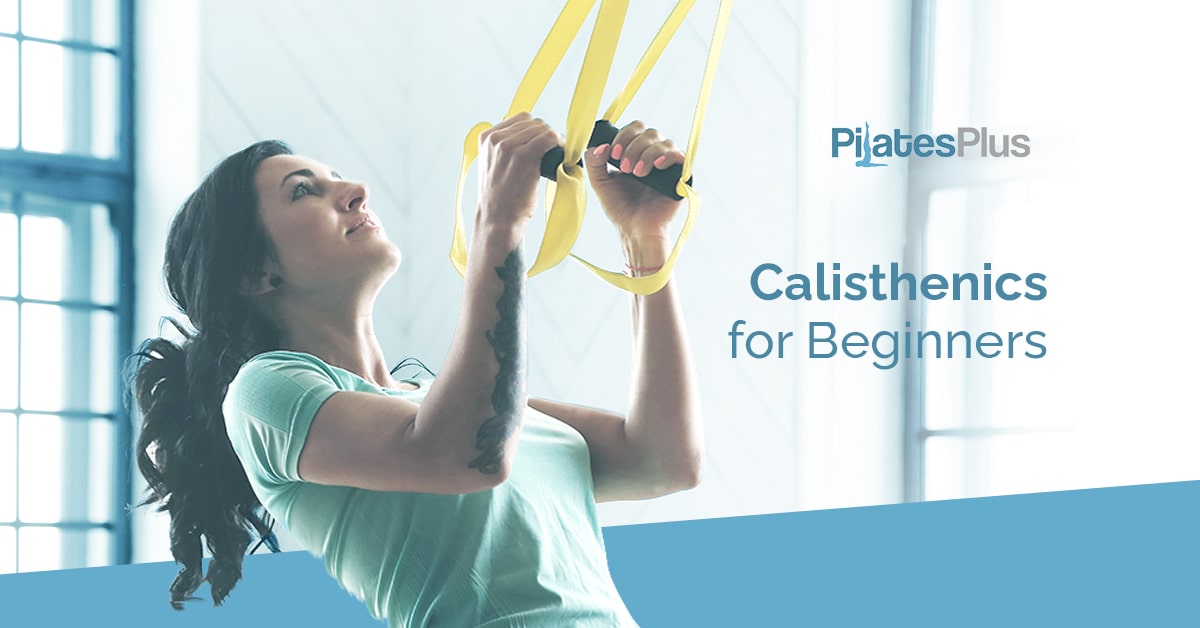
Date Updated: December 26, 2020
What is Calisthenics
Known also as bodyweight training, these are exercises that are done using mostly your own bodyweight or minimal equipment. If you’ve ever taken up any kind of workout, then chances are you’ve done some form of callisthenics or other, like pushups, squats, and crunches.
These days you won’t see many Singapore gyms offering callisthenics classes straight up as they’re not as trendy as the likes of HIIT, Functional Training, or boxing. What many people don’t know is that callisthenicss conditioning exercises are a great way to build the strength and stamina needed for high-intensity complex movements.
Callisthenics is the perfect workout for people who are only starting to get into a fitness regimen. At Pilates Plus Singapore, we recommend callisthenics as a complementary class to our Pilates for Beginners sessions. No special skills are required to perform these exercises, and they can be adjusted easily to your strength and fitness levels. What’s more, once you’ve learned how to do them properly, you can do callisthenics just about anywhere, anytime.
Callisthenics Benefits
If your goal is to develop muscle mass like that of a bodybuilder, then callisthenics is a good supplementary exercise for weight training, which should be your main workout. But if you’re aiming for a limber and toned physique, then callisthenics would suit you fine.
Callisthenics exercises help you build a fit and strong upper and lower body, and core. With these simple and natural movements, you’ll be able to:
- Improve your flexibility
- Enhance your range of motion
- Maintain good form
- Develop your aerobic capacity
- Tone and strengthen your muscles
- Gain flexibility on your hips and lower body
- Get in shape or cross-train for a sport/competition
Step-by-Step Guide to Calisthenics
Although it’s ideal for beginners, callisthenicscalisthenics are a go-to complementary workout for seasoned gym-goers, bodybuilders, and exercise buffs. That’s because these exercises are an effective way to work out your entire body, improve strength, stability, and mobility to help you perform better not just in your sport or workout of choice but in your daily tasks and everyday routine.
| EXERCISE TYPE | HOW TO DO IT | WHERE IT WORKS |
|---|---|---|
| Pushups | Get down on all fours but place your hands slightly wider than your shoulders. Extend your legs and hold your body up into plank position using your arms. Lower your body until your chest is nearly touching the floor. Pause, push yourself back up, and repeat. Category: Pushups Where it works: torso—pectorals, triceps, anterior deltoid |
torso—pectorals, triceps, anterior deltoid |
| Squats | Stand up straight with your toes facing forward, but place your feet slightly wider than the hips. Clasp your hands over your chest for balance and thrust your hips backwards. Then bend your knees and go down as low as you can while keeping your back in a neutral position. Category: Squats Where it works: thighs/quadriceps |
thighs/quadriceps |
| Bench Dips | Sit down on a stable bench with your hands placed next to your thighs. Extend your legs and lift your backside off the bench with your arms supporting your body. Bend your elbows to lower your body so your arms are at a 90-degree angle. Push yourself up with your palms. Repeat. Category: Bench Dips Where it works: upper arms/triceps |
upper arms/triceps |
| Calf Raises | Stand up straight then raise your heels off the floor by pushing through the balls of your feet until you’re on your toes. Hold it, get back down slowly, then repeat. Category: Calf Raises Where it works: calves and ankles |
calves and ankles |
| Crunches | Lay down with your back flat on the ground, knees bent at a 90-degree angle, and feet planted on the floor. Cross your hands over your chest and bend your head slightly toward your chest. Contracting your core, push yourself up until your chest touches your knees. Category: Crunches Where it works: abdominal muscles: trunk, pelvis, obliques |
abdominal muscles: trunk, pelvis, obliques |
| Lunges | Stand up straight then step forward so one leg is at a 90-degree angle to your body. Slowly sink into a lunge until the back knee is a few inches off the ground. Switch legs and repeat. Category: Lunges Where it works: thighs/quadriceps |
thighs/quadriceps |
| Burpees | (1) Get into a squat position. (2) Lower your hands to the floor. (3) With your hands supporting your weight, kickbackkick back so you’re on your hands and toes, and in a pushup position. (4) Do a frog kick by jumping back into your starting position. (5) Stand up and reach over your head. (6) Jump up and land back down with your knees bent, then get into a squat position and start over. Category: Burpees Where it works: chest, arms, quads, glutes, abs, hamstrings |
chest, arms, quads, glutes, abs, hamstrings |
| Chin Ups | Stand in front of an exercise bar. Grasp the bar from underneath—in a tight grip and with your arms slightly closer together. Pull yourself up using your biceps so that your head goes up over the bar. Repeat. Category: Chin Ups Where it works: back muscles |
back muscles |
| Mountain Climbers | Start in plank position—shoulders directly over your hands and wrists; with your spine in a neutral position. Work your core to lift the right knee and bring it toward your elbow as close as you can. Move the right knee back to starting position while driving the left knee toward your left elbow, then back to starting position. Think of it like you’re running in place but in a plank position. Category: Mountain Climbers Where it works: deltoids, biceps, triceps, abdominals, chest, obliques, quads, hamstrings |
deltoids, biceps, triceps, abdominals, chest, obliques, quads, hamstrings |
Why Pilates Plus for Calisthenics
At Pilates Plus in Singapore, callisthenics is one of our go-to methods for building the foundations of our Pilates practice. We guide our students toward achieving their fitness goals in a way that is physically and mentally suited to them. Progressing through their workouts, they gain a better appreciation of callisthenics as a way to build better functional mobility, so they can go about their lives with ease, comfort, and control.
We help you move your body better with these callisthenics class options at our studio:
Callisthenics Fundamentals: to help you get the basics with the right form and movementsBent Arm Class: to level-up your pull-ups, dips, squats; and advance to complex variationsRings Class: to work out the arms through gymnastic rings, paralettes, and floor work
Ready to get started on callisthenics? TAP HERE to register an account and after you have purchased the package we can update your class credits accordingly. A booking confirmation email will be sent after you book your session. Feel free to contact us at +65 6221-1845 for more details.
* All content (text and visuals) on this page was reviewed by Michel Velasco on December 22, 2020



